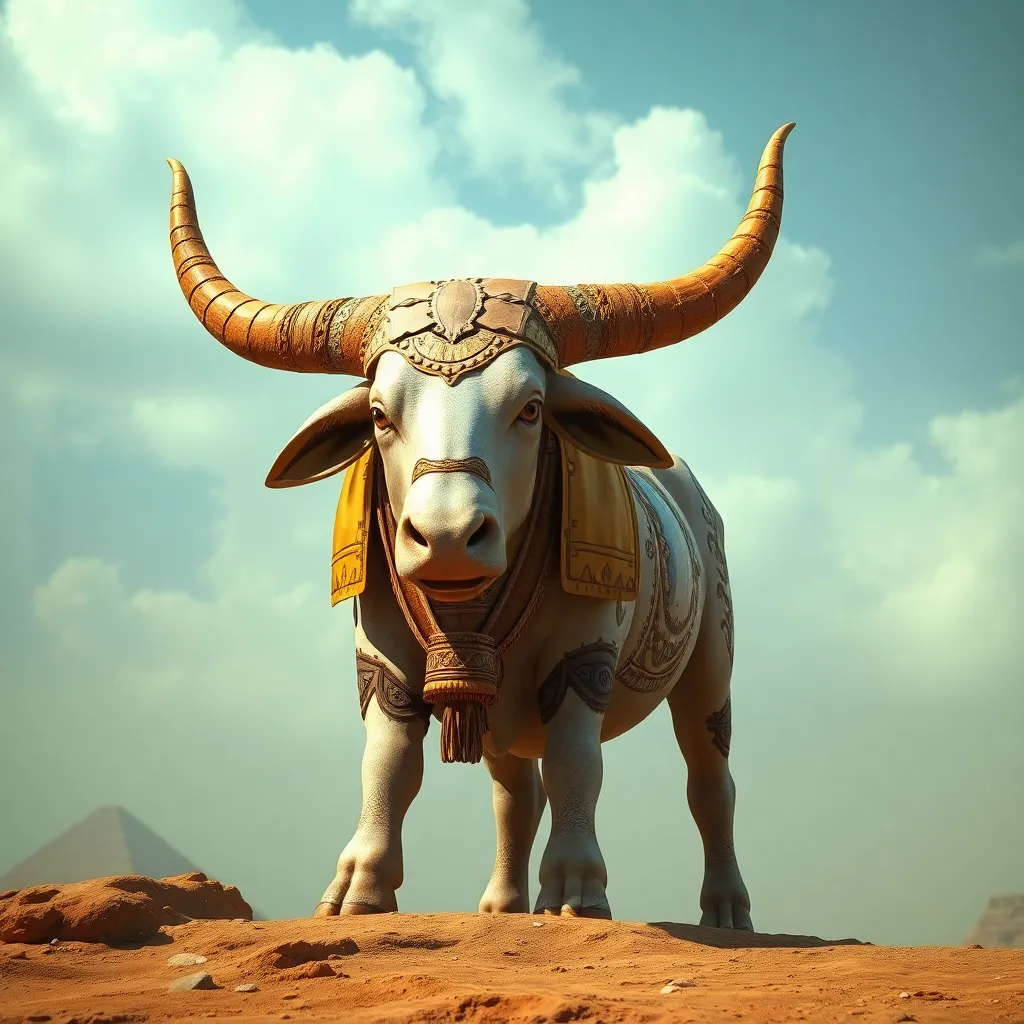The Apis Bull: The Living Embodiment of a God
Introduction
The Apis Bull holds a unique and significant place in ancient Egyptian culture, revered not just as an animal but as a divine entity. Symbolizing strength, fertility, and renewal, this sacred bull was believed to be the earthly manifestation of the god Ptah, the creator and god of craftsmen. The worship of the Apis Bull reflects broader themes of divinity and representation in animal worship, which were prevalent in ancient Egyptian religion.
Historical Context of the Apis Bull
The origins of Apis Bull worship can be traced back to the early dynastic period of ancient Egypt, around 3100 BCE. Archaeological evidence suggests that the veneration of the Apis Bull was firmly established by the Old Kingdom, where it became an integral part of the religious landscape.
Key archaeological findings related to the Apis Bull include:
- The discovery of the Serapeum in Saqqara, where the sacred bulls were buried.
- Statues and inscriptions that depict the Apis Bull alongside various deities.
- Artifacts that illustrate the rituals performed in honor of the Apis Bull.
Physical Characteristics and Symbolism
The Apis Bull was distinguished by several unique physical characteristics that set it apart from ordinary bulls. Notable features included:
- A black coat with white markings, particularly a white triangle on its forehead.
- Distinctive characteristics such as a large hump on its back and a long tail.
- Golden orbs on its back, which were believed to symbolize the sun.
These features were rich in symbolic meaning within Egyptian mythology. The black color represented fertility and the underworld, while the white markings symbolized purity and the divine. Thus, the Apis Bull was not merely an animal but an embodiment of the connection between the earthly realm and the divine.
The Role in Egyptian Religion
The Apis Bull was primarily regarded as a representation of the god Ptah, the creator deity associated with Memphis, the capital of ancient Egypt during the Old Kingdom. Ptah was often depicted as a man with a bull’s head, further intertwining the bull’s significance with divine power.
Rituals and ceremonies involving the Apis Bull were elaborate and significant. Some of the key practices included:
- Regular offerings of food and drink to the Apis Bull in temples.
- Processions celebrating the bull’s life during important festivals.
- Rituals performed at its death, which were believed to secure blessings from the gods.
These rituals underscored the Apis Bull’s role as a mediator between the gods and the people, reinforcing its sacred status within Egyptian society.
The Life Cycle of the Apis Bull
The life cycle of the Apis Bull was marked by a series of significant events, beginning with its selection. The criteria for choosing an Apis Bull included:
- The bull must exhibit specific physical traits as outlined in religious texts.
- It was often selected from among the herds of the royal estate.
Once chosen, the bull was consecrated and celebrated as a living god. The Apis Bull typically lived for about 25 years. Its death was a moment of great mourning, with elaborate burial practices reflecting its sacred status. The burial included:
- Embalming processes similar to those used for human mummies.
- Interment in the Serapeum, a grand burial site specifically built for the Apis Bulls.
The death of an Apis Bull was seen as a significant event, prompting national mourning and the search for a new bull to take its place.
Cultural Impact and Legacy
The Apis Bull profoundly influenced art, literature, and societal norms in ancient Egypt. Its representation can be seen in various forms, including:
- Statues and carvings in temples that celebrated the bull’s divine nature.
- Myths and stories that highlighted the bull’s connection to creation and fertility.
- Religious texts that emphasized the importance of animal worship in maintaining cosmic order.
Comparatively, other cultures also revered animal deities, such as the sacred cow in Hinduism and the bull in Mesopotamian cultures, showcasing a universal theme of animal worship across different civilizations.
Modern Interpretations and Relevance
In contemporary culture, the legacy of the Apis Bull is perceived through various lenses. Its representation in art and popular culture serves as a reminder of ancient beliefs and practices. Many modern religious and spiritual movements draw inspiration from ancient Egyptian mythology, including the veneration of animal spirits and deities.
The Apis Bull continues to hold significance in modern religious practices, where its image is sometimes invoked in rituals aimed at connecting with divine energies and seeking blessings.
Conclusion
In summary, the Apis Bull stands as an enduring symbol of divinity and the rich tapestry of ancient Egyptian spirituality. Its importance transcends time, reflecting humanity’s ongoing quest for connection with the divine through the natural world. The legacy of animal worship, as exemplified by the Apis Bull, remains a significant aspect of human spirituality, inviting us to consider the sacredness of all living beings.




